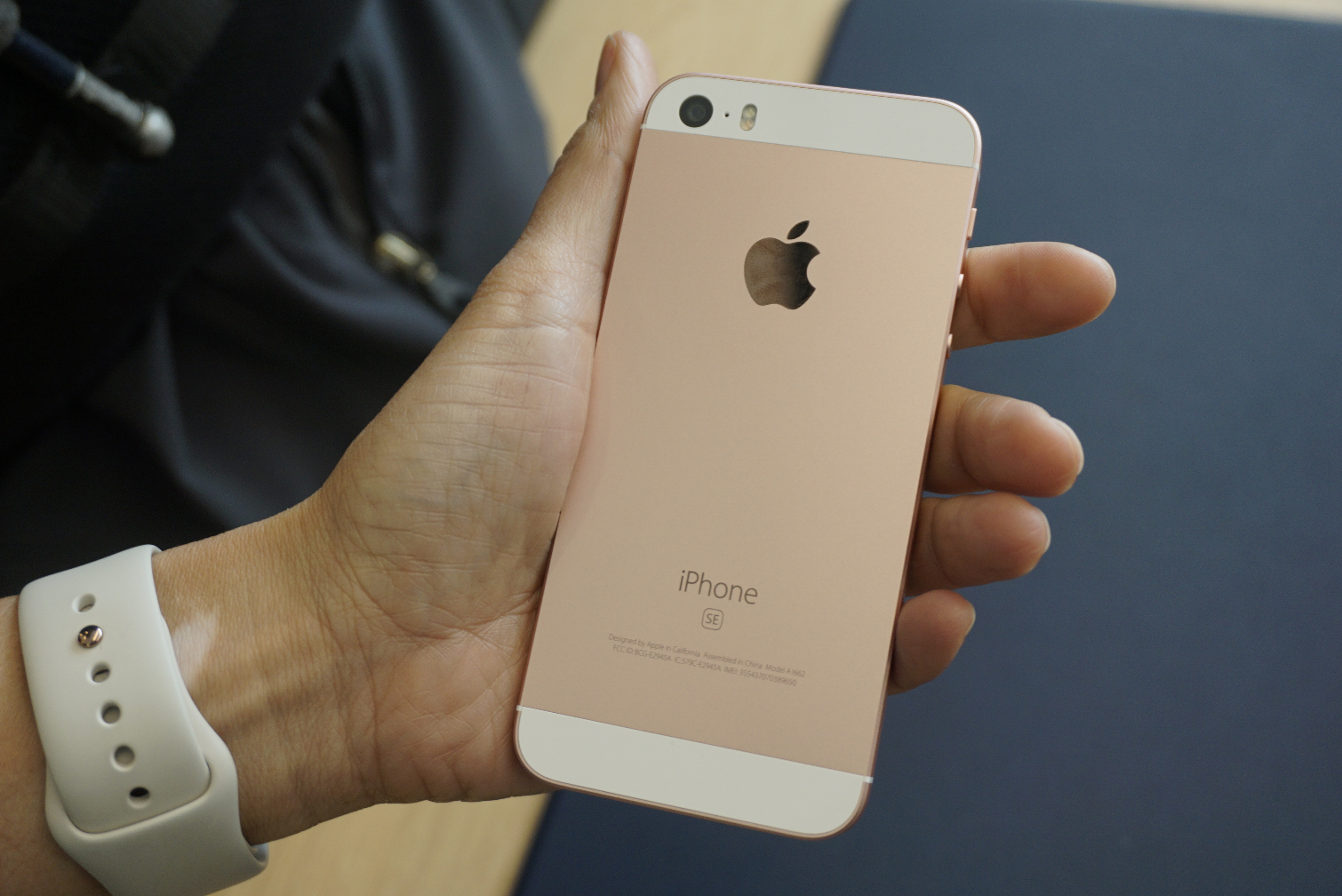iPhone SE's Real Killer Feature: The Price
Apple has never sold a sub-$500 iPhone until now, which shows just how much the smartphone market has changed.
I felt the earth shake a little when Apple revealed how much the iPhone SE would cost when the phone goes on sale March 24: $399. That's an unprecedentedly low, sub-$500 price tag for any new iPhone. Over the years, iPhones have only increased in cost, and have consistently debuted with price tags of $650 or higher.
Even the iPhone 5c, a lower-cost alternative to the iPhone 5s, cost $549 at launch.

A $399 phone from Apple is groundbreaking. And it's not just a reflection of the smartphone industry's falling prices as a whole, but also a portent of things to come.
Sure, the iPhone SE isn't an entirely new phone that comes with fancy bells and whistles. It simply refreshes the two-year-old iPhone 5s in Apple's lineup, giving it specs more in line with those of the iPhone 6s and 6s Plus. This includes the fast A9 processor, 12-megapixel rear camera and support for newer features such as Apple Pay and Live Photos.
Apple has gotten away with imposing hefty premiums on its devices for years now, and fans of smaller phones — the iPhone SE's target audience — would likely still have lined up to buy the 4-inch iPhone even if Apple had slapped a higher price tag on it.
MORE: iPhone SE vs. 6 vs. 6s - Which iPhone Is Right for You?
So why the relatively low price? Apple is likely reacting to a recent shift in the market. In the past two years, midrange smartphones have started to offer better components and more-premium designs at lower prices.
Sign up to get the BEST of Tom's Guide direct to your inbox.
Get instant access to breaking news, the hottest reviews, great deals and helpful tips.
Avi Greengart, research director for consumer platforms and devices at Current Analysis, sees the iPhone SE as a way for Apple to expand its market, particularly in emerging countries. “Pricing the iPhone SE at $399 allows Apple to attract these customers who would otherwise be relegated to buying a used iPhone,” he said.
“What's brilliant about this strategy is that it won't cannibalize sales and margins of more expensive iPhones, because people who can afford to spend more will continue to do so to get larger display sizes,” Greengart added.

The iPhone SE joins a growing number of competitively priced phones with impressive specs. The launch of the OnePlus One in 2014 questioned the notion that a flagship-level smartphone needed to cost more than $500. But OnePlus was plagued with shipping and production issues, and had a ridiculously exclusive invite system that prevented the company's phone from catching on.
Then came the Alcatel Idol 3. For $249, Alcatel offered a 5.5-inch Android smartphone that was solidly built, with a long-lasting battery, good display and decent cameras. The Idol 3 received rave reviews; even though other phones before it were affordable, this was the first sub-$300 phone to make such waves.
After the Idol 3, more and more "affordable premium" phones cropped up. I first heard of that phrase during a ZTE briefing in 2014, and the Chinese phone maker has used that mantra for years. Affordable premium has since permeated the market, as OnePlus, Motorola, Huawei and Google, among others, churned out more phones that offered near-top-of-the-line specs at midrange prices.
The Nexus 5X offers excellent battery life, great cameras and solid performance for just $350 (and the price falls to $199 with a subscription to Google's Project Fi wireless service), while the Huawei Honor 5X packs a useful fingerprint sensor and long-lasting battery into a handsome metal body, all for just $199.
MORE: The Best and Worst Cell Phone Carriers in the U.S.
Ramon Llamas, IDC’s research manager for wearables and mobile phones, notes that even with the iPhone SE’s $399 price tag, shoppers still have lower-priced Android options. “This is not the solution to bring Apple waves and waves of users,” Llamas said. “It's still expensive.”
When you consider the lower prices of so many Android smartphones, the iPhone SE almost seems expensive, offering similar cameras and a similar build at hundreds of dollars more. But if you compare the iPhone SE to 5-inch and smaller phones such as the Sony Xperia Z5 Compact ($450) and the HTC One A9 ($499), Apple's device is a downright steal.
Whether the iPhone SE is a sign that Apple is finally ready to broaden its product lines to include lower-cost models — “I wouldn’t hold my breath,” IDC’s Llamas said — or just a one-off tactic to goose sales until the high-end models arrive this fall, it's certainly an encouraging step. Maybe rival Samsung will take note and offer an actually compelling Galaxy smartphone for less than $500 soon.
Samsung has “so many other devices not named S7 and [they’re] already mid-rangish around that price point, so it's not a question of are they there yet. They're there,” Llamas said. “The only question is how much more they want to step on that pedal.”
Still, a (broke) girl can dream, right?
Cherlynn is Deputy Editor, Reviews at Engadget and also leads the site's Google reporting. She graduated with a Master’s in Journalism from Columbia University before joining Tom's Guide and its sister site LaptopMag as a staff writer, where she covered wearables, cameras, laptops, computers and smartphones, among many other subjects.

